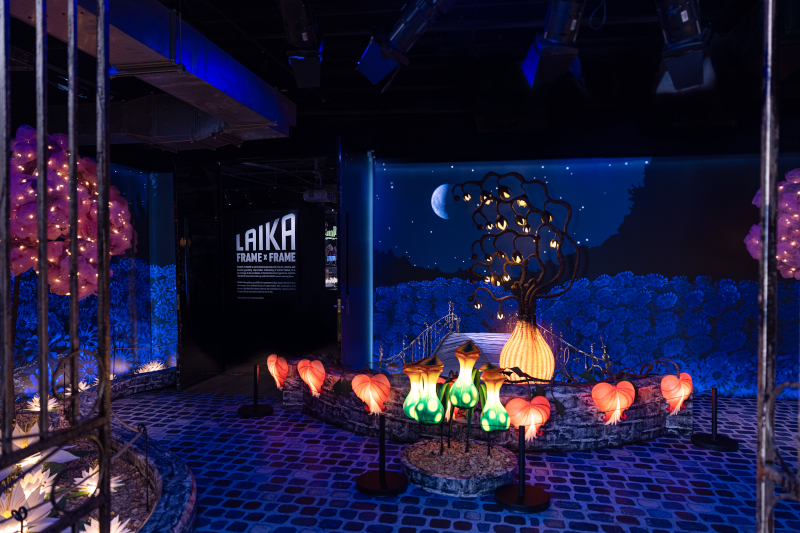*****
Exhibition shows at BFI Southbank from Monday, 12th August to Tuesday 1st October 2024 (free to visit, but booking essential – click here) accompanied by the Stop Motion animation season including all five LAIKA feature films and much, much more
In the best part of two decades, US-based Laika Studios – named after the first dog in space – has carved itself a niche as arguably the foremost producer of stop-motion animation puppet films. That’s distinctly different from the other leading company in the stop-motion field, UK-based Aardman Animations, who specialise in plasticine animation. The difference is that plasticine is a malleable substance that can be reworked and remodelled one frame at a time, whereas although puppets can be moved a frame at a time, they can’t be remodelled.
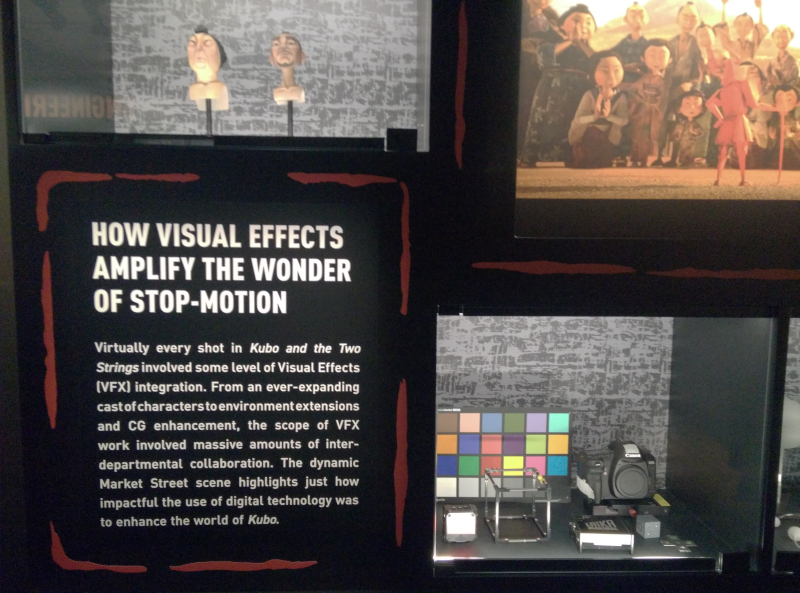
Laika have consistently (and deservedly, in this writer’s opinion) picked up Oscar nominations for each of their five features, a remarkable achievement that speaks of the high quality of their work. Their five features (with a sixth forthcoming) are:
- Coraline (2009): A young girl is lured into a darker, parallel world.
- Paranorman (2012): A boy who can speak with the dead, ostracised by his local community, must save his town from dark forces by righting centuries-old wrongs.
- The Boxtrolls (2014): A town is terrorised by mysterious creatures resembling boxes with heads, arms and legs who live underground.
- Kubo and the Two Strings (2016): In old Japan, a young boy goes on a quest.
- Missing Link (2019): A Victorian explorer finds the Missing Link. Together, they go off to the Himalayas to search for the Yeti.
- Wildwood (2025) – the forthcoming sixth feature.
Laika have produced five features. Five films in twenty years may not sound much in terms of numbers, but stop-frame takes a lot longer to shoot than live action. Animation is, after all, filmmaking put together one frame at a time, whether that’s through a series of drawings on paper, modellings on computer, or manipulation of objects in physical space. Discounting for this present review the use of animation for special effects, which has a long history and is a whole other, if not entirely unrelated subject, live action films are build out of shots, whereas in animated films, the shots themselves are built out of frames.

The studio appear to possess a penchant for the darker and stranger elements of fantasy – malevolent alternative worlds, troubled spirits unable to pass over into the next life, creatures living underground, Japan’s historical and cultural past, and mythic, legendary beasts. This is a long way from the colourful, friendly Magic Kingdom of Walt Disney, the more down-to-earth, British characters of Aardman or the fantastical optimism of Studio Ghibli.
You approach the exhibition at BFI Southbank via a walkway with accompanying exhibits, some of which double as adverts for related merch available in the shop. (I was particularly taken with the set of Laika-themed socks in one of the glass cases).
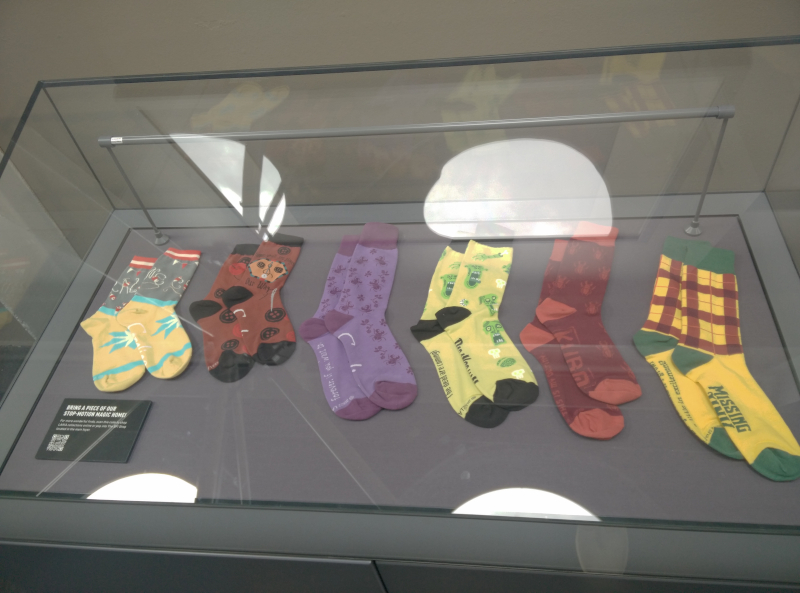
Then you enter the exhibition, which is in the same space as last year’s marvellous exhibition based around Powell and Pressburger’s The Red Shoes (1948), to find yourself in a lobby featuring life-sized models of some of the garden plants from Coraline’s Other Garden.
Then it’s into the exhibition proper, divided into five sections for each of the five Laika films, with a sixth teaser section for the soon-to-be released Wildwood. The latter is a little walkway through a life-size wood, not dissimilar in exhibit terms to the Coraline garden in the entrance, except that it has images from Wildwood playing on a monitor at the cul-de-sac end of the walk.
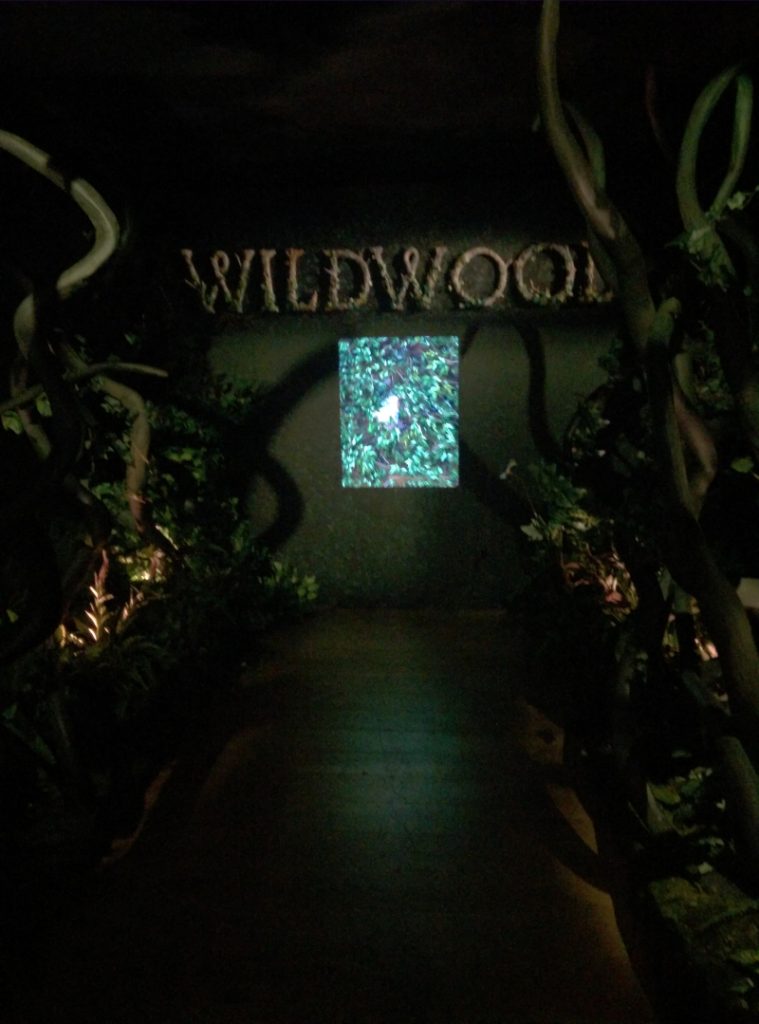
The other five sections, though, have a lot more to them. The exhibition has been carefully and cleverly constructed in five separate areas, each based around Laika’s five, already released films to showcase five different elements of stop-frame puppet production.
- Coraline: A community of creative talents is required to bring a story to life for a stop-motion production.
- Paranorman: The complexity of a puppet build: a look at stop-frame puppets and their component parts.
- The Boxtrolls: The role of the model shop and how props are developed.
- Kubo and the Two Strings: Using visual effects (computer effects) to enhance the magic of stop-motion.
- Missing Link: Set design – and animation as performance within the designed set.
In addition, the exhibition is full of drawers for you to pull open and examine the contents, and vertical panels for you to slide open and look at. This is particularly apt given the hands-on nature of stop-frame, where the filmmaking process involves animators physically going in and manipulating physical puppets on frame at a time. We’re back to the exhibition title here; quite brilliantly conceived, just as this whole exhibition is brilliantly thought through.

The exhibition also contains numerous video screens running short featurettes about various aspects of Laika’s work, but these are almost too much to take in on one visit, so you might well want to return for a further view or views.
And yet the strange thing, to which various caption cards in the exhibition allude, is that there is a magic to stop-motion, and it’s a magic that, ultimately, happens when successive animated frames are run through a film projector and the characters or objects spring magically to life. So it’s a peculiar thing to visit an exhibition about animation production which is, essentially, static, even though it has all those helpful video screens.
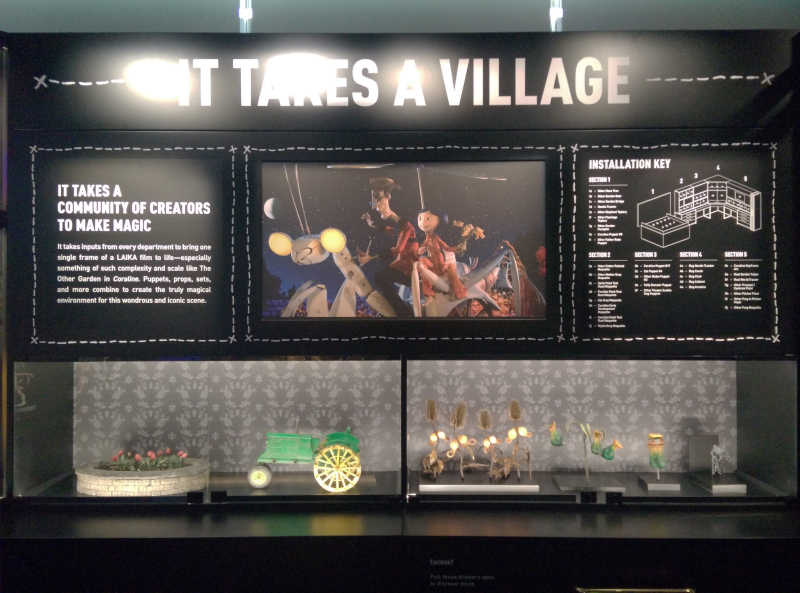
All this brings home the tremendous amount of production effort that goes into making Laika’s stop-frame features before the animators get on set and alchemically breathe their life into the puppets frame by frame. It also serves as a welcome teaser for – or entry point to – BFI Southbank’s current Stop Motion season.
That season features, in addition to the five Laika features, a variety of work ranging from live action / animation composites like King Kong (1933), through Czech marvels by Jiří Trnka, Jiří Barta, Karel Zeman and Jan Švankmajer, to such films as Anomalisa (2015), My Life as a Courgette (2016) and The Pirates! In an Adventure with Scientists!(2011).
Also featured are such luminaries as Peter Lord, Henry Selick, Nick Park, Barry Purves, the Brothers Quay and Laika’s Travis Knight, plus live action directors who have made forays into stop-frame filmmaking like Wes Anderson and Guillermo del Toro and Robert Morgan. Many of them are giving talks or hosting Q&As as part of the season.
The LAIKA: Frame x Frame exhibition shows at BFI Southbank from Monday, 12th August to Tuesday 1st October 2024 (free to visit, but booking essential – click here) accompanied by the Stop Motion animation season including all five LAIKA feature films and much, much more.
